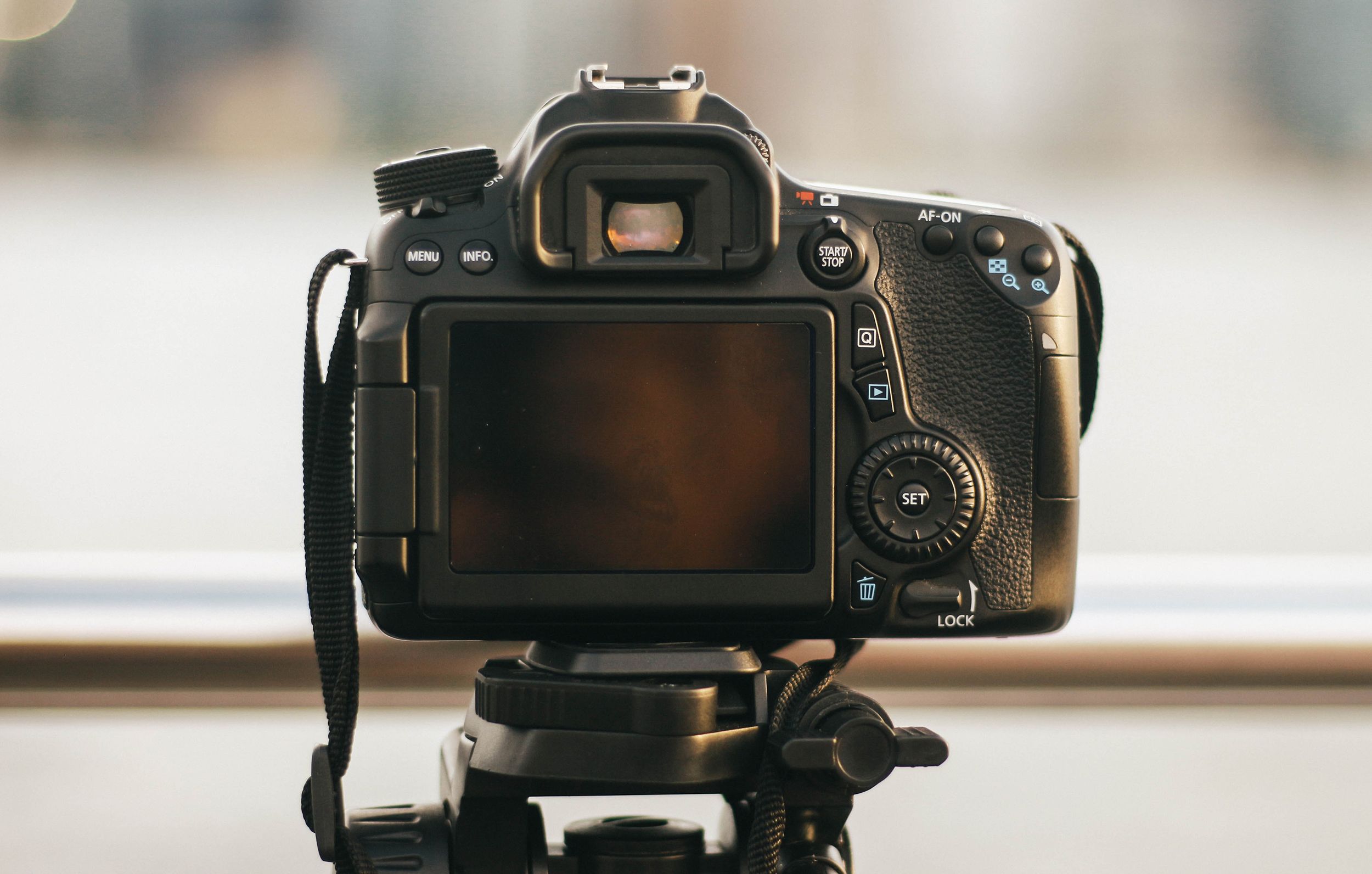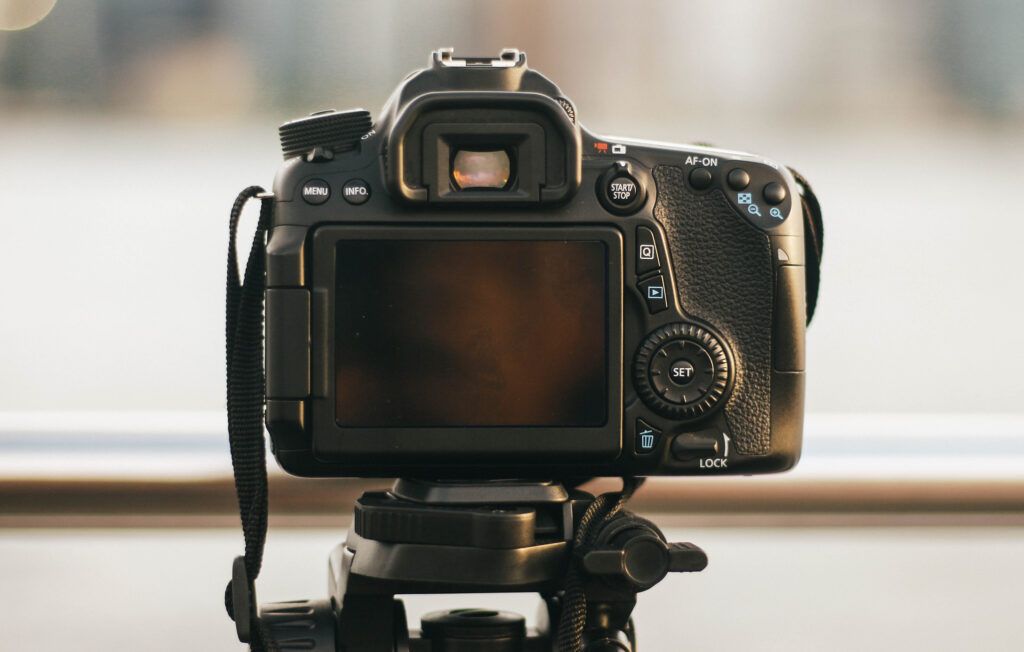You’ll probably have noticed that your camera has both an LCD screen and a viewfinder (some modern cameras only have the LCD), but which one should you be using? And is one better than the other? In this guide, I’m going to look at viewfinders vs. LCD screens and help you understand the technology behind both.
Here’s what we’ll cover:
- What is a viewfinder?
- Is an optical or electronic viewfinder better?
- Pros and cons of using a viewfinder
- What is an LCD screen?
- Pros and cons of using an LCD screen
Recommended Reading: If you’d like to master camera settings to create gorgeous, creamy, blurry backgrounds, grab a copy of Photzy’s premium guide: Beautiful Background Blur.
What Is a Viewfinder?
The viewfinder is one of the most basic elements of any camera. It’s the little window at the top of the camera that you look through to see the scene you’re going to photograph. The viewfinder dates from the earliest film cameras, but not all modern cameras have them. Some just use a larger LCD screen on the back. But you’ll always find viewfinders on lots of cameras, in particular those aimed at pros and serious consumers. You’ll also find two different viewfinders used on different cameras: optical viewfinders (OVFs) and electronic viewfinders (EVFs).
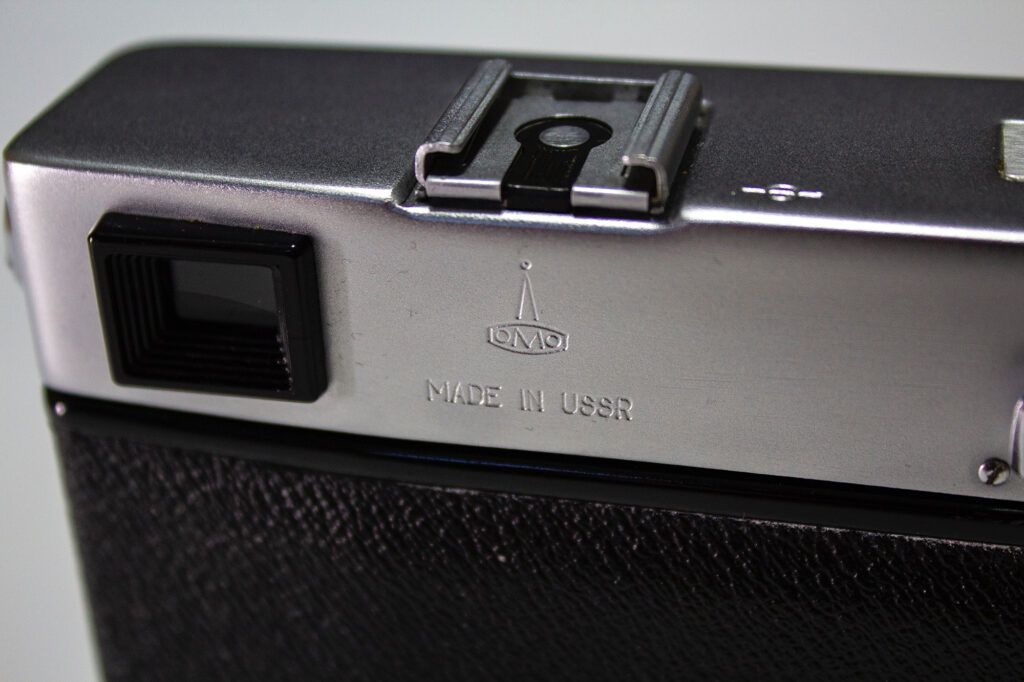
A traditional viewfinder on a film camera. Small and discreet, this is easy to hold up to the eye. Photograph by Anton Maksimov 5642
Is an Optical or Electronic Viewfinder Better?
Optical viewfinders are the original kind that was found on film cameras. A lot of us pros love them as they give you an unfiltered and unaltered view of the scene in front of you. What you see with your naked eye is what you get when you look through the viewfinder. And optical viewfinders will work even when the camera is turned off. They don’t struggle in low light or produce inaccurate colors – they’re no different from looking through a window. Even though they’re optical, most OVFs display information along the bottom of the screen and, at the very least, will have an exposure bar to tell you if you’re under or overexposed.
You might think that this means OVFs are perfect, but like many things photographic, they have a few downsides. Firstly, if you’re using a DSLR (which is where you’ll generally find OVFs), you can’t see the image when you take a photo. This is because the mirror flips up when you press the shutter and blocks the viewfinder. This can be an issue if you’re photographing moving subjects, which could move around a lot while the mirror is up. The other disadvantage is that, whilst an OVF shows you what your eyes see, this isn’t necessarily what your camera sensor sees. Your preview could look great, but you need to pay attention to your exposure bar and that you’ve got your metering right in-camera.
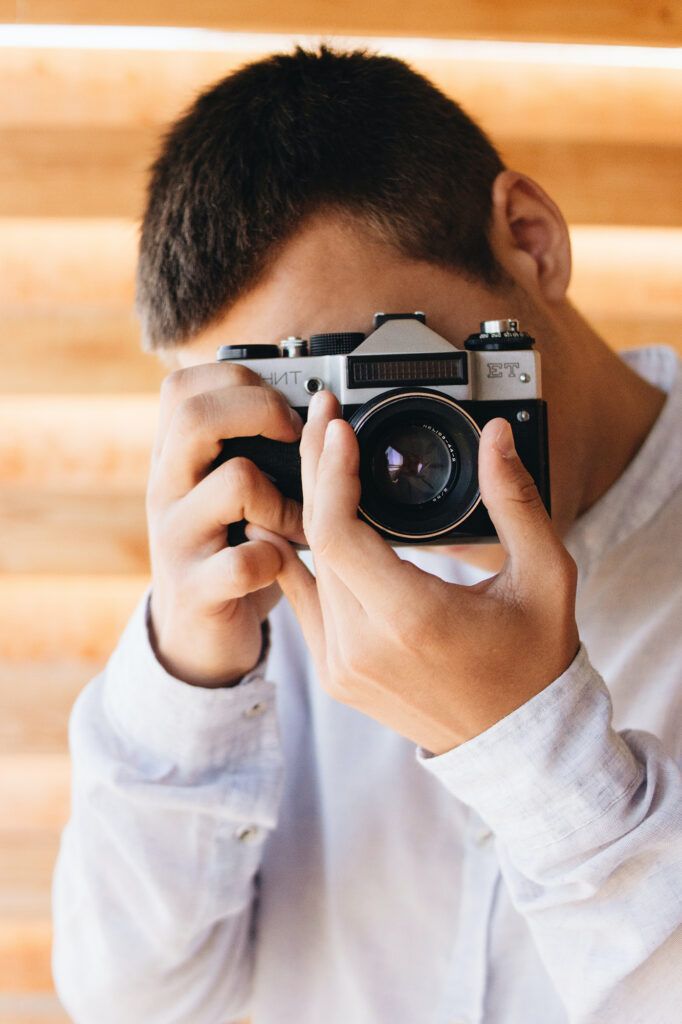
For many photographers, holding the camera to the eye to look through the viewfinder feels the most natural. Photograph by Angelica Levshakowa
EVFs have come a long way in the last decade and are pretty much ubiquitous in a lot of modern cameras, particularly mirrorless ones. What is an EVF? It’s essentially a tiny high-resolution screen that you hold up to your eye like an OVF to look through. Being digital, it can show you a huge amount of information and data, with most systems allowing you to choose what you view, alongside a representation of the scene you’re photographing. So, you can choose to have your exposure bar alongside things such as a live histogram, focus peaking, and your chosen exposure triangle settings. The other reason that people love EVFs is that they show you exactly what the scene will look like when photographed, as opposed to the scene that our eyes and an OVF see. You can see in real-time what your shot will look like, make any adjustments you need to, and even preview the scene in different modes (such as black and white).
The other reason that people love EVFs is that they show you exactly what the scene will look like when photographed, as opposed to the scene that our eyes and an OVF see.
But there are downsides to EVFs. They drain batteries and use a lot of power, so you’ll need to carry extra batteries at all times! And whilst they do show you an excellent representation of what your final image will look like, they’re not perfect. Manufacturers often make them a little brighter so it’s easier to see what you’re looking at and they can get pretty grainy in low light.
Key Lesson: So, is there a definitive answer to which is better? Not really, as I think a lot of it comes down to personal preference and, to a certain extent, what camera you started on. If you’ve been shooting long enough to have started on film, you may well find an OVF easier and more instinctive to use. But for those starting with digital, an EVF may well be an easier option. Of course, which viewfinder you use will probably also come down to what camera you shoot with!
Pros and Cons of Using a Viewfinder
Let’s look at the pros and cons of using a viewfinder:
Pros:
- Not troubled by light and weather – Even if it’s bright and sunny, a viewfinder won’t suffer any glare as you’re holding it up to your eye. In the same vein, it’s easier to use if it’s raining.
- Familiarity – Don’t underestimate the familiarity of using a viewfinder. If you’ve been shooting for a long time and shot on film, you won’t have used an LCD screen. A viewfinder feels more natural and is, to a lot of us, more natural to work with.
- Precision – Viewfinders reduce image distortion, allow us to focus on the small details, and aid us in capturing an accurate image.
- Batteries – Whilst EVFs do drain the battery, they still use far less power than an LCD screen. If you’re using an OVF, you won’t be using any battery power at all!
- Keeping the camera steady – It’s easier to keep your camera steady when you’re using the viewfinder, as you’re holding it up to your eye and will have a good grip on it with both hands.
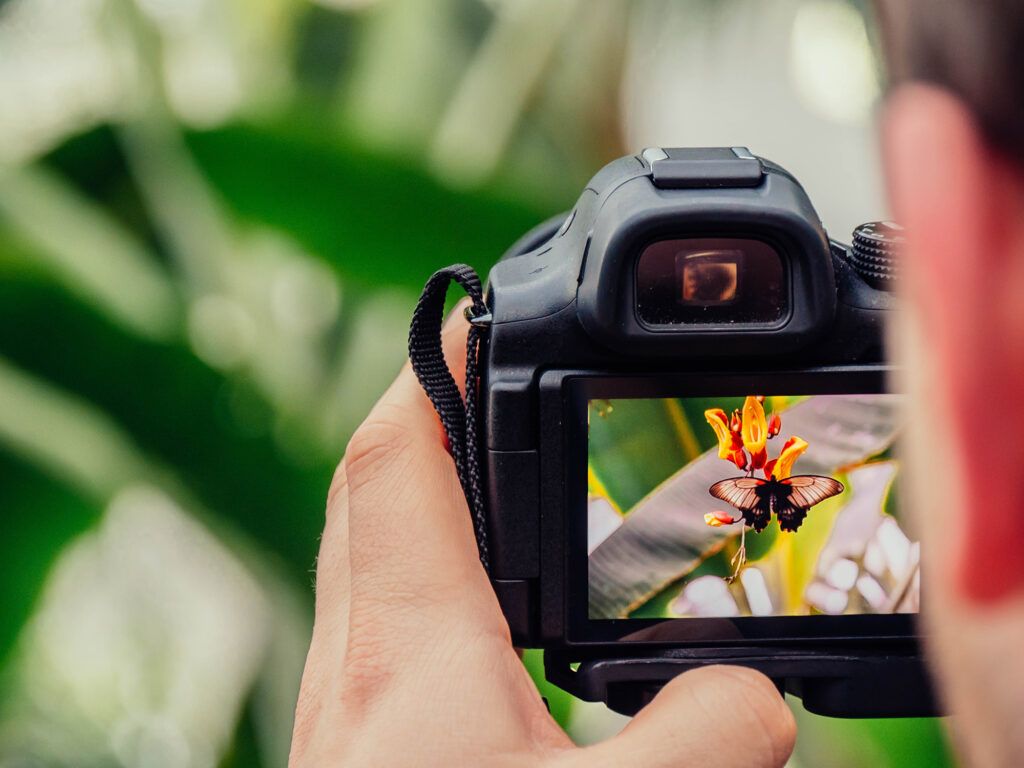
LCD screens are large and bright, making it easy to see your subject. Photograph by Jamie Street
Cons:
- Viewfinders are small – Viewfinders are much smaller than LCD screens, which can make it difficult to see if you’ve captured everything you want accurately.
- Not great for those who wear glasses – It’s difficult (but not impossible) to use a viewfinder with glasses on. Most cameras do have a built-in diopter, but this does lead to a lot of taking glasses on and off again.
- Lower resolution – To see the details on viewfinders, particularly EVFs, you have to zoom into the frame. However, this often lowers the resolution of your preview, which can make it hard to see details correctly.
What Is an LCD Screen?
The LCD screen is the large screen on the back of digital cameras. LCD stands for Liquid Crystal Display and uses light-emitting crystals to display images. The crystals can show various light colors and intensities and this modulation allows an array of these crystals to form a display. Some, but not all LCD screens are in ‘True’ color (16,777,216 colors). Modern cameras often have LCD screens that tilt and rotate, making them ideal for photographing at awkward angles.
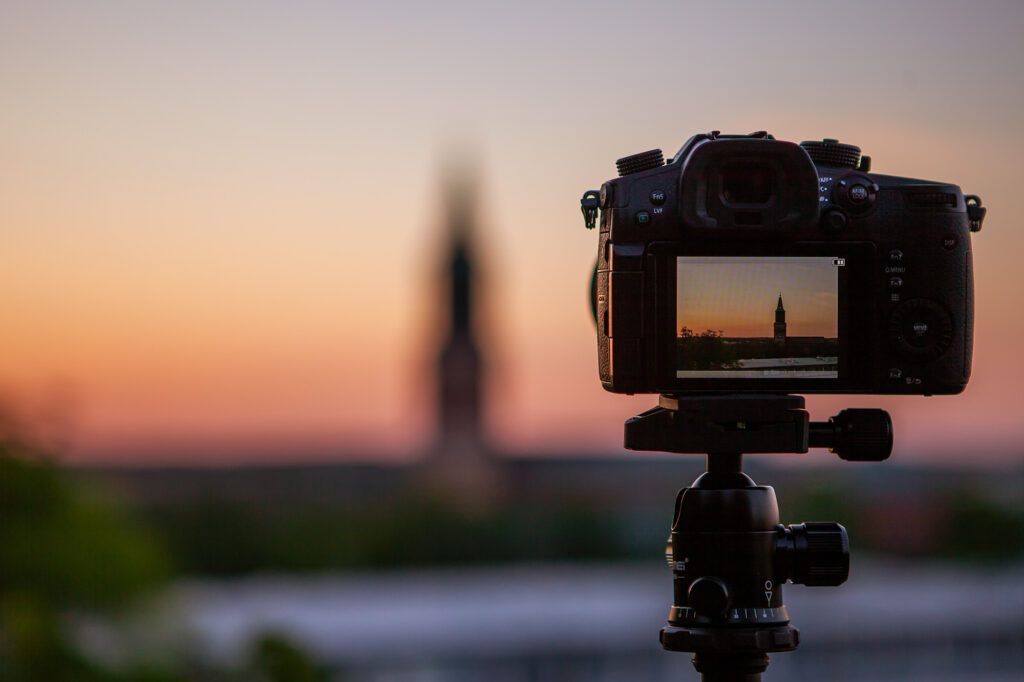
LCD screens are ideal to use when shooting on a tripod as they help prevent camera shake that could be caused by leaning into the viewfinder. Photograph by Patrick
Pros and Cons of Using an LCD Screen
Let’s look at the pros and cons of using an LCD screen:
Pros:
- 100% of the image – LCD screens provide 100% coverage of your entire shot, whereas viewfinders only show 90-95% of the image (on average). This means that when composing a shot through your viewfinder you can miss seeing small details that you might not want in a shot.
- Good at night – LCD screens are particularly useful at night as they are large and bright. This means you can see things more clearly, even when there’s no light in the sky!
- Allow for flexibility and interesting angles – As I mentioned above, modern cameras often have LCD screens that rotate and tilt. This means it’s easier to get photos at interesting angles and allows for greater flexibility with your shots.
- Instant playback – Using the LCD screen means that after you’ve taken your shot, you’ll instantly see it flash up on the screen.
LCD screens provide 100% coverage of your entire shot, whereas viewfinders only show 90-95% of the image (on average).
Cons:
- Lower resolution – The sharpness of the LCD screen depends on the resolution of the screen. High-end cameras may have a screen resolution of around 5 million pixels, but when we consider that digital cameras can have resolutions of upwards of 40 million pixels, it’s inevitable that there is a loss of resolution in the quality of the image we see on the screen.
- Can overexpose an image – Whilst LCD screens are becoming increasingly accurate, they do tend to be brighter than your final shot will appear (to make it easier for people to view things on them). This can be confusing for beginners; although, it’s a great lesson in making sure you check that your exposure is correct!
- Bright light – It’s impossible to use LCD screens in bright light. There’s just too much glare off the screen and you won’t be able to see clearly to compose your shot.
- Camera shake – Shooting with your LCD screen means that you need to hold your camera away from your body, sometimes even at arm’s length. This immediately destabilizes your camera as it’s not being supported by your steady torso. This can make your shots more prone to camera shaking.
- Batteries – LCD screens are huge drains on battery power and will eat up your batteries faster than almost any other feature on the camera. Use your LCD screen the whole time and you’ll need to carry extra batteries with you!
Recommended Reading: If you’d like to master camera settings to create gorgeous, creamy, blurry backgrounds, grab a copy of Photzy’s premium guide: Beautiful Background Blur.
Conclusion
There are pros and cons to using both viewfinders and LCD screens. Is one definitively better than the other? I don’t believe so. Both have their uses in different situations. But for me, the viewfinder just edges it. It feels more natural and doesn’t take away from the stability of your camera. I freely admit, though, that I’m from a film background – younger photographers may completely disagree with me! At the end of the day, you should use what feels most natural to you in a given situation.
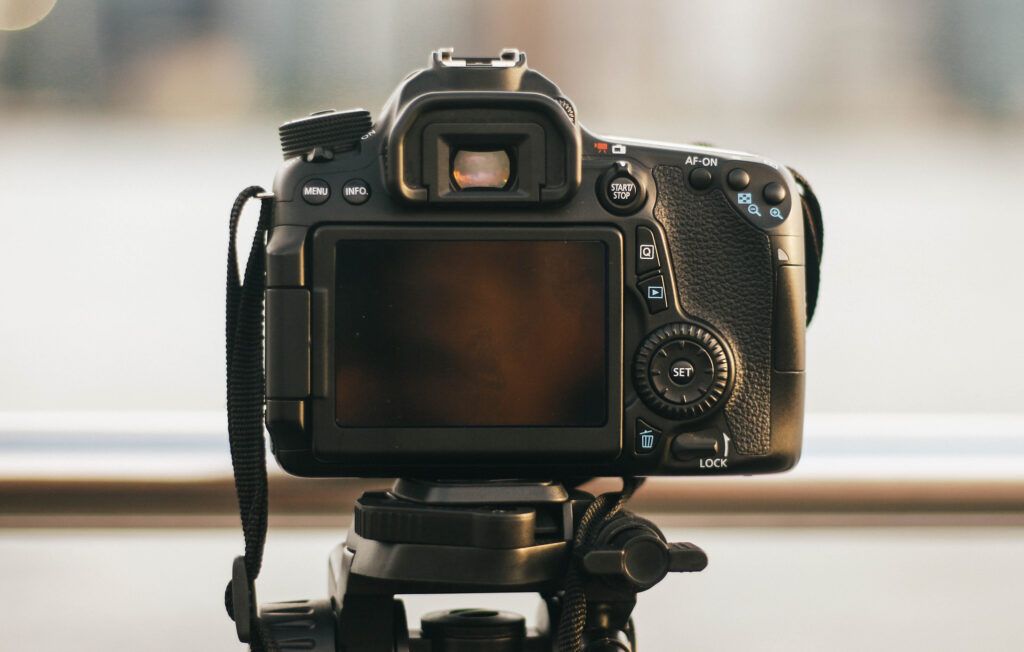
Self-Check Quiz:
- What are the two different types of viewfinders?
- Which type of viewfinder was found on film cameras?
- Do viewfinders work well in sunny conditions?
- What does LCD stand for?
- What percentage of the image does an LCD screen show?


